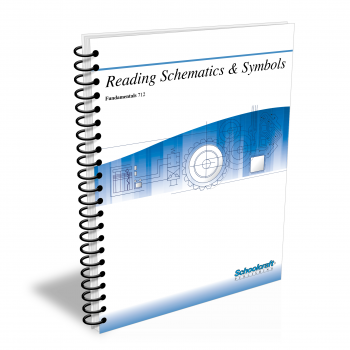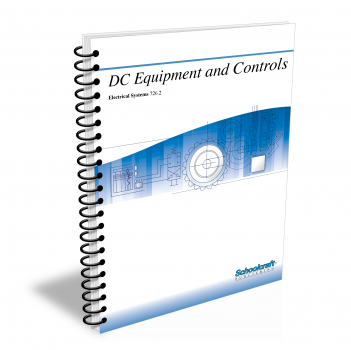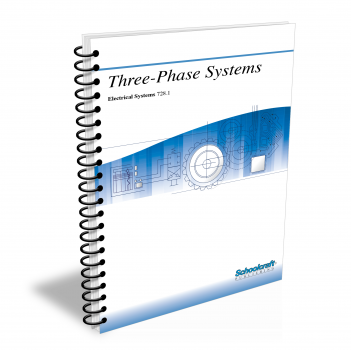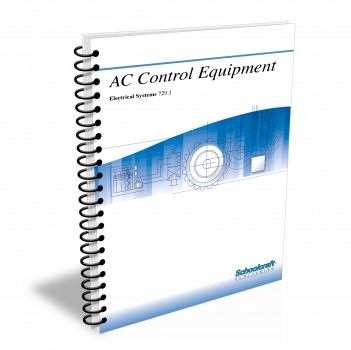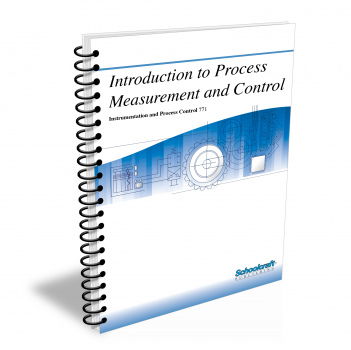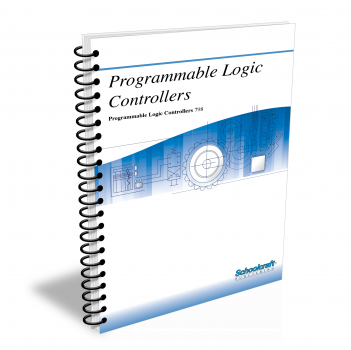Single-Phase Motors
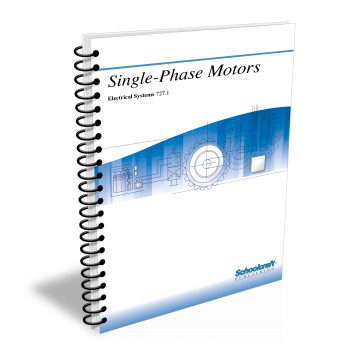
Course Number: 727.1
The Single-Phase Motors textbook covers the types and operating principles of common single-phase motors. Explains NEMA motor standards. Explains how to identify motor leads on split-phase, capacitor-start, capacitor-run, permanent split capacitor, and repulsion motors. Also covers universal motors, shaded-pole motors, and other special types, including synchro and servo systems. Gives general maintenance procedures on all single-phase motors.
Does your curriculum require additional topics not included in this textbook? Build a customized version of the Single-Phase Motors textbook below.
This textbook has been recently updated
to include topics lists, objectives, & key terms for every chapter.
Recommended Contact Hours – 15
Preview a Chapter
Available Supporting Material
- Table of Contents
- Exam Copies
- Suggested Titles
Table of Contents
Chapter 1: Introduction to Single-Phase Motors
Topics: Motor parts; NEMA motor standards and enclosures; Nameplate data; Induction motors; Stator, rotor field; Split-phase starting; Synchronous speed; Starting switches
Learning Objectives:
- List the parts of a rotor.
- List the data given on a typical motor nameplate.
- Explain how an induction motor works.
- Demonstrate how to calculate the number of electrical degrees in one complete rotation of a motor.
- Explain how a centrifugal switch works.
Chapter 2: Split-Phase Motors
Topics: Motor connections; Skein and consequent-pole windings; Two-speed, three-, four-winding, and dual-voltage motors; Troubleshooting
Learning Objectives:
- State the reason why a second stator winding is important in the single-phase induction motor.
- Explain how to identify motor leads when there are no tags or colors to identify them.
- Describe a skein winding.
- List the ways to change the speed of a motor by changing the number of poles.
- Discuss some common motor problems.
Chapter 3: Capacitor Motors
Topics: Kinds and operation; Rotating magnetic fields; Single-voltage, dual-voltage, reversible, capacitor-start, and capacitor-run motors
Learning Objectives:
- State the definition of a capacitor.
- Explain how to make a split-phase motor operate as a capacitor-start motor.
- Explain how the running windings are connected to make a dual-voltage motor run on either 120 or 240 volts.
- Select the best capacitor to use as a substitute for a defective capacitor when an identical unit is not available.
- List problems that cause the circuit breaker to trip when you turn on a capacitor motor.
Chapter 4: Repulsion Motors
Topics: Repulsion principle; Purpose of brushes; Short circuiter; Commutator; Repulsion, compensated repulsion, and repulsion-induction motors
Learning Objectives:
- Discuss the operating principles of a repulsion-start induction-run motor.
- Explain how to seat new brushes on the commutator.
- Discuss the functions of the major motor components.
- List the reasons a repulsion motor might fail to start.
Chapter 5: Universal Motors
Topics: Performance characteristics; Speed control; Motor life; Universal motor assemblies; Ventilation; Brush mounting and selection
Learning Objectives:
- Explain eddy current loss in the universal motor.
- List the advantages of a universal motor.
- Explain how the speed of the universal motor is controlled.
- List the criteria for selecting carbon brushes for universal motors.
- State reasons why a universal motor might have poor torque.
Chapter 6: Special Motors
Topics: Shaded-pole, synchronous, hysteresis, unexcited synchronous, induction, reluctance, and permanent-magnet motors
Learning Objectives:
- State the definition of a salient pole.
- Explain the operating principles of a shaded-pole motor.
- Discuss the operating principles of a hysteresis motor.
- Explain the difference between an unexcited synchronous motor and an excited synchronous motor.
Chapter 7: Synchros
Topics: Rotor and stator construction; Synchro assembly and transmitter operation; Receivers; Control synchro systems; Control transformer
Learning Objectives:
- State the definition of the term synchro.
- Describe motor construction in a synchro.
- Demonstrate how to calculate terminal-to-terminal stator voltage.
- State the reason why the control transformer is important in a synchro control system.
- Explain how to connect a differential synchro system.
Chapter 8: Servos
Topics: Servomechanisms; Amplidyne operation; Overtravel control; DC and AC servomotors; Servo-control bridges; Servo actuators
Learning Objectives:
- State the definition of a servomechanism.
- List the four characteristics needed to keep a regulated quantity matched to a reference valve in a servomechanism.
- Explain how an amplidyne control system works.
- Discuss how to control overtravel in a servomechanism.
Chapter 9: Motor Installation
Topics: Conductor size; Preventing shorts and grounds; Controllers; Overcurrent protection; Guards; Grounding; Fuses; Starters; Service factor
Learning Objectives:
- Explain how to determine conductor size for motors.
- State the definition of a controller.
- List the conditions under which the frames of stationary motors must be grounded.
- Demonstrate how to determine the size of a dual-element when two or more motors are connected to one feeder.
- List the electrical and mechanical factors to consider in selecting a motor for a specific application.
Chapter 10: Motor Maintenance
Topics: Procedures; Testing capacitors and stator windings; Armature defects; Noisy operation; Bearing problems; High temperatures; Incorrect speed
Learning Objectives:
- Demonstrate how to test bearings for wear.
- Explain how to test capacitors.
- State the reason why proper belt tension in important.
- List the common causes of excessive brush sparking.
Request Exam Copies
Exam Copies
Ready to see a copy of our textbooks? After selecting which textbooks you’d like to review for your course, you can submit your request by either logging in or creating an account so we know where to ship your exam copies. A representative from Schoolcraft will contact you to confirm and finish processing your request.
Exam copies are always free and yours to keep.
Selected Exam Copies
none selected
* Maximum of five copies can be ordered
